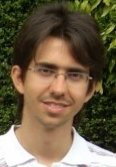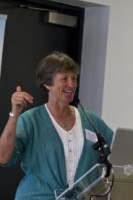Natural Catastrophes
Sustainable Living & City
Post-Doctoral Fellowships
France
2010.09.30
Corrosion and interlacement percolation
However, this does not reflect reality,” explained Dr. Augusto Teixeira. He is participating in the development of an alternative model, known as random interlacement, which incorporates the notion of dependence between the different elements of a crystalline material. His aim is to pinpoint the differences and similarities between these two types of models. This should help scientists choose the most appropriate model based on their applications.
Augusto Teixeira is Brazilian and studied Physics at the Federal University of Minas Gerais (UFMG). He later decided to complete a Master’s degree in Mathematics at the Institute for Pure and Applied Mathematics (IMPA) in Rio de Janeiro. This Master’s programme was decisive for him, leading him to pursue a PhD at the ETH Zurich – a very important step in his career. Under the supervision of Professor Alain-Sol Sznitman, he published various research papers in the fields of probability theory and percolation. He currently holds a fellowship from the AXA Research Fund and is working on a project at the ENS involving the analysis of corrosion and percolation.
What has your AXA fellowship brought you?
It is still too early to appreciate the full benefits of my fellowship, since I have only been in Paris for three months, but it is already clear that it will be an amazing time for me professionally. Paris is perhaps the best place in the world to work in probability theory, and the opportunity to be at the Ecole normale supérieure (ENS) has already brought me in contact with several researchers that have extensive experience in my area of research. I am very excited about the near future.
Could you describe your experiences with the AXA Research Fund community?
My closest experience with the AXA Research Fund was the Talent Day. It was definitely very inspiring. At first I was a bit apprehensive about being a mathematician at a conference about environmental risks. But quite to the contrary, it was very rewarding to interact with the AXA Research Fund staff, the speakers of the Talent Day and especially the other fellows. Although there was a big gap between our areas of research, it was very inspiring to hear about the work of several other talented researchers, especially in this decisive moment of my career.
Can you briefly describe what your research project is about?
I am mainly interested in studying new models for the corrosion of materials. Recently, a model called random interlacements was introduced by Alain-Sol Sznitman. We believe that random interlacements can give a better description of certain types of corrosion, such as gel degradation by proteins. In this project we seek to obtain a better theoretical description of the model in question and compare it with the usual percolation models.
Random Interlacements
To add or modify information on this page, please contact us at the following address: community.research@axa.com

Augusto
TEIXEIRA
Institution
Fondation Sciences Mathématiques de Paris
Country
France
Nationality
Brazilian
Related articles
Pollution
Sustainable Living & City
Chronic & Non Communicable Diseases
Air Quality
Urban Planning
Smart Cities
Respiratory Diseases
AXA Outreach
Spain
RI-URBANS
Urban areas face increasing challenges related to air pollution, impacting public health and quality of life. The ‘Air Quality in... Read more

Fulvio
AMATO
Spanish National Research Council
Climate Change
Marine Biodiversity
Sustainable Living & City
Nature-based Solutions
Sea-level Rise & Erosion
Coastal Living
Climate Adaptation & Resilience
AXA Award
Germany
2024.12.01
Greening The Blue Economy
Dr. Goseberg's work involves identifying and defining nature-based solutions to protect natural coastlines from severe weather events and rising sea... Read more
Nils
GOSEBERG

